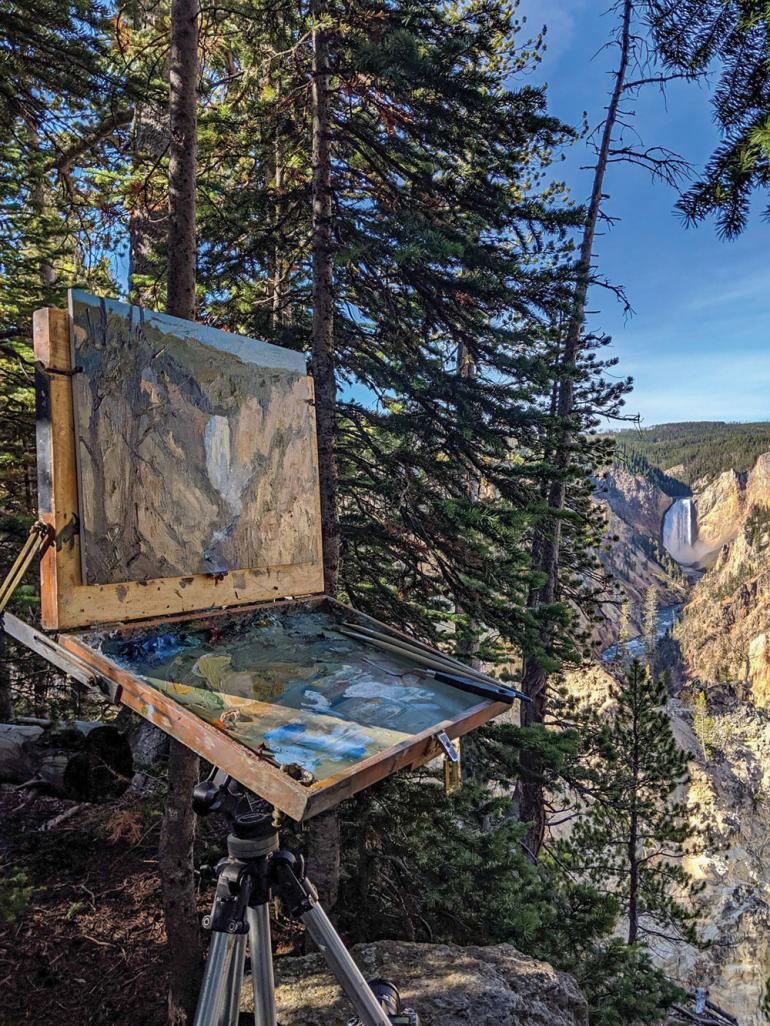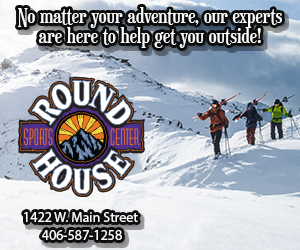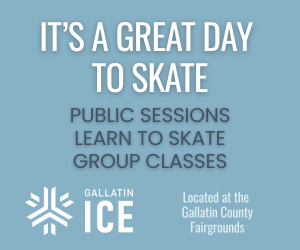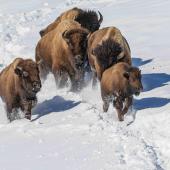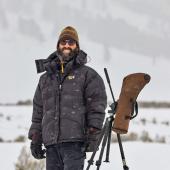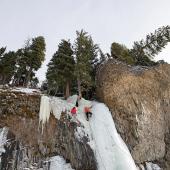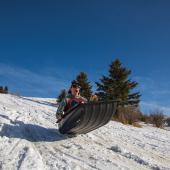Hidden in Plein Sight
The unexpected benefits of outdoor art.
There was no hatch on the Gibbon River, and the fishing was challenging, but I didn’t care—Yellowstone Park on a sunny, autumn day is wonderful. After another bad cast, everything ended in a tangled mess. I have a master’s degree in Fisheries Science! I’m better than this! I thought, tucking my rod under my arm and retrieving my tangled line. I noticed a blur in my peripheral vision, and a mountain chickadee flashed past, landing on my fly rod. I stood motionless as we stared at each other. In the “pics or it didn’t happen” era, I considered reaching for my phone, but opted instead to enjoy the moment I had with the four-inch-long bird. It dashed off 30 seconds later with the same speed and agility it arrived with. I’m sure no one else saw us.
I was in the Park on a modern expedition—painting and fishing. Barely an amateur at the former, I had taken a watercolor class hosted in the Park. I was required by the instructor to share my art with the other students and paint amongst the public. The public might judge me for being a bad artist. High levels of imposter syndrome had me concerned. The mention of “the public” turned my anxiety to eleven. It was like backing up a trailer: you just know you’re going to be worse at it when people are watching.
Hearing people comment, look over my shoulder, and tell me they envied my creativity and courage made me realize I wasn’t being judged at all.
The group painted together on day one. My first paintings were simple, but better than what I could have done without instruction. I felt that anyone with moderate talent could produce what I had. Still, buoyed by the experience, I painted a scene from behind my Gardiner hotel over dinner. The next morning, we drove to the lower falls of the Yellowstone River and were told to expect dozens of visitors. Our instructor said that people will be curious, that we should try to ignore them unless we wanted to engage. Would people engage with me? Would they comment on my painting? Would they ask questions? My heart palpitated the more I thought about strangers judging my work, and I was flushed. I hiked down a trail, moving away from the crowds to a quieter vantage point. I started my composition with a handful of people around. Almost immediately, a 12-year-old boy and his younger sister approached. “Are you a good artist?” the boy asked.
“Ha! Clearly you’ve never seen my work!” I replied.
“Well, you’re sketching what you want to paint,” he observed, “so I assume you must be pretty good. Most people just start painting.”
“Actually, I’m pretty new to painting,” I informed him and his sister. I showed them what I’d completed the day before and they were impressed. We talked about art in their school, where they were from (Ohio), and why I wasn’t just taking a photo. They thanked me for my time. Their parents beamed.
Next, a man in his 60s strolled up and stated, “I used to paint a lot. I did a lot of art.” I didn’t ask how one “does” art. Later, I learned that some of the other class participants had allowed passing children to add some color here or a brush-stroke of water there.
My heart palpitated the more I thought about strangers judging my work, and I was flushed. I hiked down a trail, moving away from the crowds to a quieter vantage point.
We had planned to paint Old Faithful, and it was close to erupting when we arrived the next morning. We watched the eruption and discussed how to capture steam in watercolors before the instructor turned us loose. I beelined for a geyser about a mile away. Solitary Geyser is aptly named; I had about 30 minutes alone. I should probably try to paint Old Faithful, I thought. Another eruption had just ended; tourists were leaving. I picked a spot on a bench, trying to be unobtrusive, trying to become invisible.
On the boardwalk, I heard whispers. “Look! he’s painting.” In my head, I heard people making fun of me, like when I was a fat, pimply-faced tuba player in middle school. I was trying to hide but an unexpected activity like painting always attracts attention. I’d heard someone whisper “No! Donna! DONNA!” then I felt Donna over my shoulder. I turned and smiled. She blushed and walked off. A passerby said, “Pretty. I can’t even draw a straight line!” For a while, a boy and his father sat on the bench beside me to watch. I smiled, sharing my sketchbook. I didn’t feel any judgement. In fact, I hadn’t felt judgement from anyone who whispered, then sidled up.
Hearing people comment, look over my shoulder, and tell me they envied my creativity and courage made me realize I wasn’t being judged at all. “I wish I could do that.” “That’s amazing!” “How do you know which colors to use?” Some could have been judgmental after they left, but it didn’t feel that way. It felt like they were judging themselves.
I didn’t feel any judgement. In fact, I hadn’t felt judgement from anyone who whispered, then sidled up.
I’m an amateur and I’ve learned to become comfortable with imperfection. A past desire to be perfect is what paralyzed my progress. Nowadays, when I’m painting or skiing or lifting, I wonder if onlookers are judging, but my experience in the Park helped me learn how to let go of my anxieties. Whenever I share my paintings, I’m still compelled to say “I don’t think they’re very good,”—but I follow it with “but I don’t care, because I’m only doing it for myself.” I’m much less self-critical now and I welcome interaction when painting in public. After all, it’s an interesting way to meet people, talk about the arts, try new things, and find unexpected paths toward personal growth.

